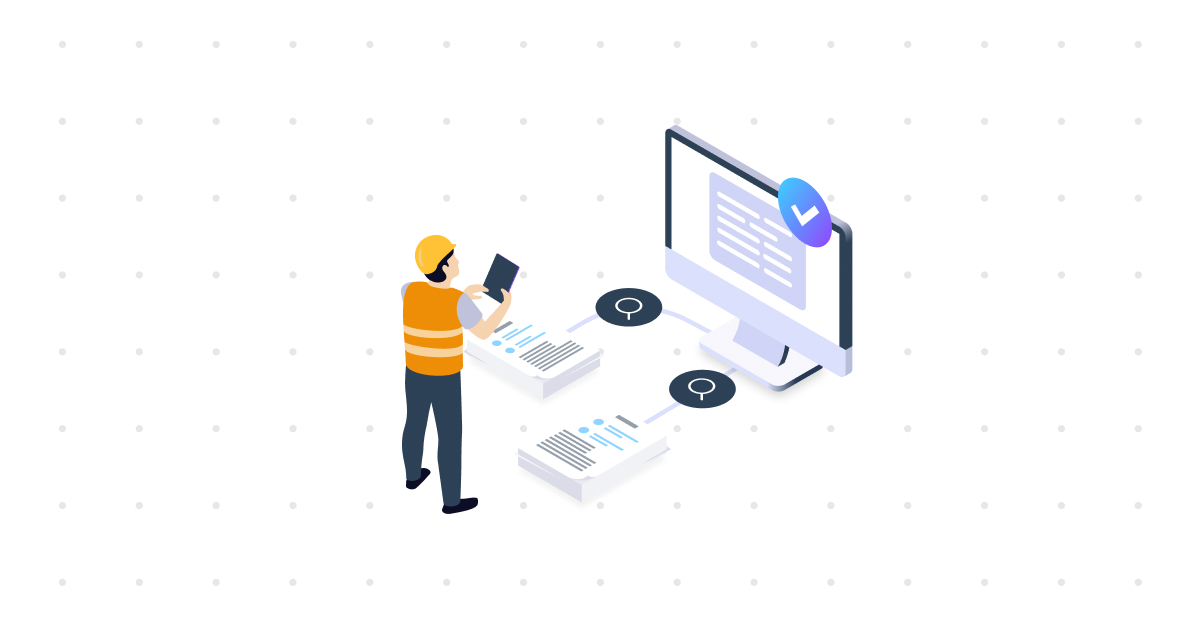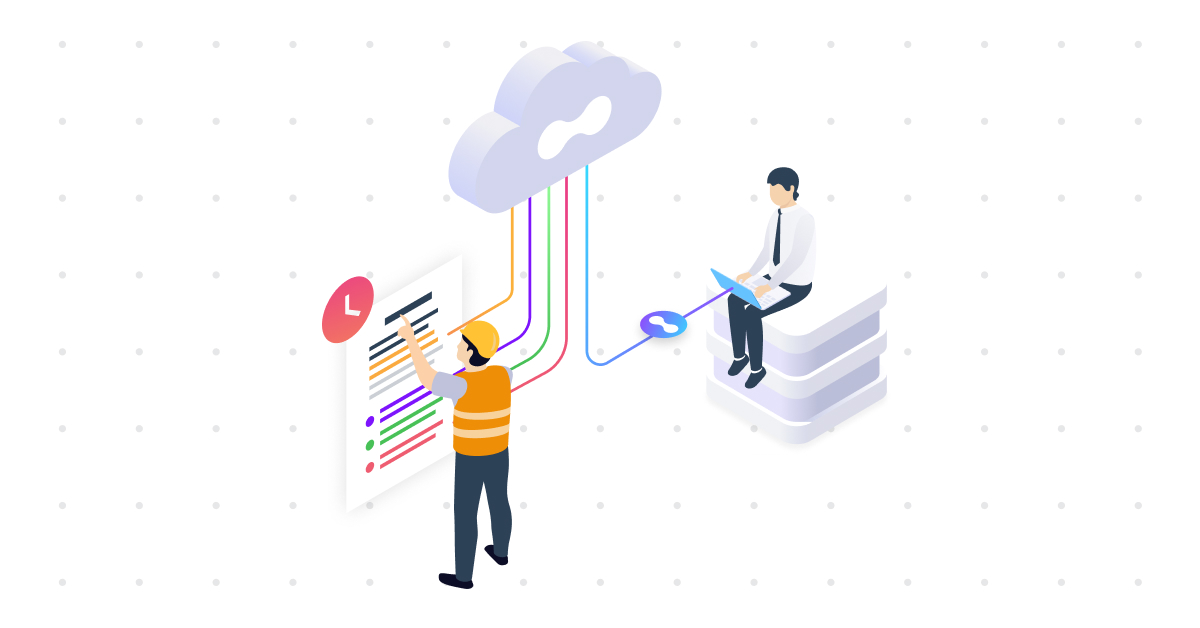5 Types of Data Standardization Using Linked Data
- Insight
The exchange of information between computers is essential for facilitating collaboration and streamlining processes across different stakeholders. For this to happen, computers must agree on how to interpret data, just like humans need to understand the language, vocabulary, and grammar used in a conversation. To interpret data, software requires uniform data, and data can only be uniform when processed consistently and uniformly by both humans and machines.
These circumstances call for data standardization. While humans need to standardize natural languages, such as English, for effective communication, computers must standardize the format and logic in which the information is stored to be machine-readable. In this blog post, we will explain five examples of data standardization companies can achieve with modern solutions using Linked Data, such as the Laces apps.
Benefits of Data Standardization
Data standardization provides three primary benefits to companies operating in highly regulated industries such as engineering or construction:
- Uniformity: For everyone to use the same standardized data and work via unified processes.
- Data reusability: For everyone to use a standardized framework for capturing knowledge and information once and use it manifold.
- Interoperability: For everyone to use the same structures and formats to exchange and share data or integrate data sources.
Businesses can use modern solutions for data standardization, such as the Laces apps, which bring all these benefits under one roof, letting you store, manage, and share data with confidence thanks to Linked Data.
5 types of data standardization you can achieve with modern solutions
1. Dictionaries, thesauruses and taxonomies
When cooperating with others, you need to speak the same language. Apart from dictionaries for natural languages like the Oxford English Dictionary or the Dutch Van Dale, professionals use domain-specific languages such as polytechnic terminology or medical definitions.
Making such content available online and in-app would benefit the entire organization, helping cross-team communication.
Benefits of using Linked Data for dictionaries:
- It helps to make data available online.
- It makes data easily scalable without software changes.
- It’s accessible via an Open Standard API.
Who uses these kinds of data standards?
Examples of users of dictionaries, thesaurus, and taxonomies are engineers and designers, pharmacists, biologists, chemists and researchers, et cetera.
2. Standards
When companies purchase a product or outsource its development, a contract contains the required product specifications. It may be a statement of a ship’s requirements, a building’s brief, a bill of materials for a bridge, or an order for a pump from a particular supplier.
Ideally, you should configure your contract based on standard product or process specifications to save time and focus on what matters most: building the product for customers.
Benefits of using Linked Data for specification standards:
- There’s no need to copy-paste data over and over.
- Specifications become more focused.
- It’s easier to manage consistency between specifications.
Who uses such data standards?
Customers of product development, engineering and design firms, manufacturers and contractors, consultants, and classification agencies use specification standards, also known as Specification Libraries (SPLs).
3. Product Catalogs
If a company offers a range of products, it wants to be the first to reach a potential customer. Capturing the attention of customers is crucial, and it should ideally happen directly where and when a potential customer needs it.
Nowadays, manufacturers use catalogs that contain data about their products, but unfortunately, these catalogs are often limited to being used in online and offline marketing materials.
Benefits of using Linked Data for product catalogs:
- Ability to distribute data with far greater reach (in any application anywhere).
- Ability to use data in-app, where data is used by the customer.
- Easier to process in configurators for a better customer experience.
Who uses data catalogs?
Product catalog users are all manufacturers, as well as IT staff who are asked to use these catalogs in online configurators and ERP software.
4. Ontologies
Just like dictionaries are used for common natural language, ontologies come in handy as specifications for information exchange that are interpretable by software. Such ontologies are called Reference Data Libraries (RDL) or Object Type Libraries (OTL). They contain “dictionaries” enriched with “data fields” required for exchange between different parties and/or their software applications.
For example, suppose a hospital receives an MRI machine and wants to learn what the installation data is and who the manufacturer is. In that case, this data can be handed over to the software systems of the hospital by the supplier.
Benefits of using Linked Data for RDLs and OTLs:
- You get a single source of truth.
- Less time spent on transformations and translations.
- Accessible via an Open Standard API.
Who uses this type of data standard?
RDLs and OTLs are used by public organizations that need information from private suppliers to populate their systems for asset management and other purposes. This way of handing over data within supply chains can be agreed upon within any client-supplier relationship.
5. Blueprints
Every piece of software uses a “map” of information, usually expressed in entities and their relations. These maps or schemas are called blueprints. A blueprint shows how software can persist and handle information consistently and coherently.
Making blueprints is the responsibility of information architects, software developers, IT consultants, and other team members in a company’s IT department. However, such blueprints are seldom shared, creating a vendor lock-in.
Benefits of using Linked Data for blueprints:
- Ability to reduce lock-in and accompanying risks.
- Ability to share your blueprints with the market (for example, for tenders).
- It’s easier to map/link different blueprints for alignment and harmonization.
Who uses these kinds of data standards?
Examples of users of shared blueprints are information architects in specific industries. For instance, blueprint users are communities working on exchange standards for product life cycle management and systems engineering like CFIHOS and ISO 15926.
Wrap up
Data standardization helps businesses improve data uniformity, reusability, interoperability, and exchange for smoother collaboration. By taking measures to create and maintain data standardization, companies can easily share data internally and externally.
The five examples of data standards outlined above use Linked Data for a good reason. It’s hard to imagine a more efficient way of publishing, sharing, and connecting data throughout the organization.
Naturally, this is just the tip of the iceberg when it comes to data standards use cases. Do you have a use case of your own?
Reach out and schedule a demo of our Laces Apps with one of our specialists to see how a modern data standardization solution that leverages Linked Data can help you.
Structure, Link, and Reclaim Control Over Requirements
In today’s complex engineering landscape, clarity is non-negotiable whether you’re working on a new satellite platform, an electric vehicle, or a regional water system. The systems we build are more complex, integrated, and dependent on data than ever before. And yet, one of the most critical ingredients for success, the specification, is still too often […]
ReadWhy You Should Use Laces to Simplify Verification and Compliance
Verification plays a critical role in industries where precision, safety, and accountability are non-negotiable, whether you’re designing infrastructure, building vehicles, or manufacturing medical devices. Yet, for many teams, managing the verification process is still a complex, manual, and error-prone task. This is where the Laces Requirements Manager comes in. It simplifies the planning and execution […]
ReadExtracting Specifications from Documents: Manual vs. NLP-Based Extraction
Extracting, interpreting, and applying specifications from technical documents, like standards, contracts, or regulations, is often a necessary but painstaking part of project or product management. Traditionally, this has been done manually, but recent advances in Natural Language Processing (NLP) have opened up new, intelligent alternatives. In this blog, we’ll explore the differences between manual and […]
Read


